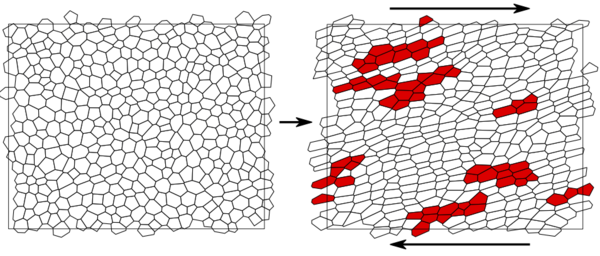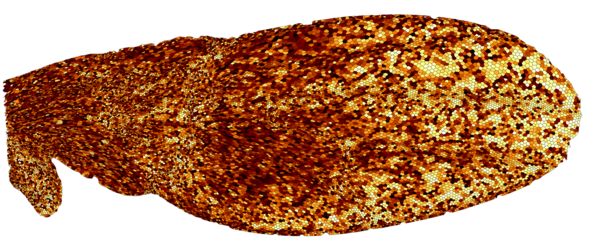
Research
Yielding transition and plasticity
Amorphous solids plastically deform in response to mechanical stress. Plastic deformation consists of discrete plastic events that interact through the material elasticity and organise into avalanches. If the stress is sufficiently high amorphous solids yield and enter a flowing phase. The steady-state yielding transition separating the two phases is a dynamical phase transition, with a well-defined value of yield stress and diverging correlation length. Interestingly, due to the out-of-equilibrium nature of amorphous solids, their transient plastic deformation exhibits unusual phenomenology, dependent on preparation and deformation history. For example, when exposed to a constant stress transient plastic flow decays as a power-law in time, called creep flow, that is sometimes followed by a sudden fluidisation event during which the plastic flow rate increases by orders of magnitude.

Our group is interested in:
- How the transient yielding phenomenology emerges from elastic interactions among the elementary plastic events?
- Is the yielding transition relevant in the context of development of biological tissues?
- How is yielding transition modified in the presence of noise, such as temperature or active biological processes?
Emergence of structural order in biological systems
Cellular configurations in biological tissues are typically disordered during development, which greatly facilitates shape changes they undergo. However, in certain instances such as the developing fruit fly wing epithelium shown in the figure, cells suddenly reorganise into a highly ordered state with a pronounced increase in the hexatic order parameter. This transition is reminiscent of 2d melting of passive systems, but remains unexplored in out-of-equilibrium context.

Our group is interested in:
- Which out-of-equilibrium processes are relevant in disorder to order transitions in biological tissues?
- How do mechanical properties of tissue change as it undergoes the transition?